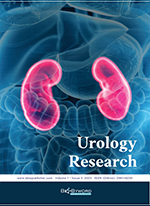Abstract
Objective: To analyze the application effect and detection rate of urine occult blood test in the diagnosis of urinary system diseases. Methods: 80 patients with definite diagnoses of urinary system diseases admitted from February 2022 to February 2023 were selected. Their urine samples were collected, urine sediment occult blood test and urinalysis were performed on each urine sample. The test results obtained from the two methods and their turnaround time were compared. Results: For the positive detection rates of white blood cells, red blood cells, proteins, and casts in the urine samples, there was no significant difference between the two methods (P > 0.05). In addition, there was no significant difference in the detection rates of various urinary system diseases between the two methods (P > 0.05). Urinalysis has a significantly shorter turnaround time compared to urine sediment occult blood test (P < 0.05). Conclusion: The urine occult blood test has a high detection rate in diagnosing urinary system diseases, with satisfactory application effect.
References
Chen J, Ji F, Zhang M, 2023, Comparison of the Effects of Urine Analyzer and Red Blood Cell Microscopy in Urine Occult Blood Testing. China Health Standards Management, 14(21): 66–69.
Zhao J, Yang C, 2021, Application of Combined Detection of Urine Dry Chemical Analysis, Urine Sediment Analyzer, and Manual Urine Sediment Microscopy in Diagnosing Urinary System Diseases. Chinese and Foreign Medicine, 40(28): 191–194.
Wang Y, 2021, Research on the Application and Results of Urine Occult Blood Tests in Diagnosing Urinary System Diseases. Chinese Health Nutrition, 31(35): 254.
Li Z, 2021, The Effect of Urine Analyzer Test and Microscope Red Blood Cell Count Test in Urine Occult Blood Test. China Medical Device Information, 27(18): 56–58.
Xu P, Zhang S, Zhang Y, et al., 2021, Enhanced Antibiotic Treatment Based on Positive Urine Dipstick Infection Test Before Percutaneous Nephrolithotomy Did Not Prevent Postoperative Infection in Patients with Negative Urine Culture. Journal of Endourology, 35(12): 1743–1749.
Peng K, 2020, Discussion on the Application Value of Urine Occult Blood Test in Diagnosing Urinary System Diseases. Chinese Community Physician, 36(36): 114–115.
Duan H, 2022, Effect of Urine Analyzer Test and Microscope Red Blood Cell Count Test on Urinary Occult Blood. Smart Health, 8(6): 31–33, 132.
Lu Y, Ding M, Shen Q, et al., 2021, Analysis of the Application Value of Urine Analyzer and Microscope Method for Urine Occult Blood Test. Smart Health, 7(18): 25–27.
Lu J, 2021, Application and Result Analysis of Urine Sediment Occult Blood Test in Diagnosing Urinary System Diseases. Chinese Modern Drug Application, 15(18): 243–245.
Zhang Y, Zhou M, 2020, A Brief Analysis of the Application Value of Urine Sediment Occult Blood Test in Diagnosing Urinary System Diseases. Journal of Contemporary Clinical Medicine, 33(6): 580, 587.
Zhu H, 2021, The Importance and Necessity of Urine Sediment Occult Blood Test in Diagnosing Urinary System Diseases. World Latest Medical Information Abstracts, 21(38): 215–216.
Feng X, Tian H, Chen G, et al., 2021, Analysis of the Clinical Effectiveness of Two Urine Test Methods in Diagnosing Urinary System Diseases. Medical Frontiers, 11(6): 35–36.
Larue L, Guevara MG, Whitley P, et al., 2021, The Cyclical and Evolving Nature of Methamphetamine Use: An Evaluation of Near Real-time Urine Drug Test Results. Journal of Addiction Medicine, 15(5): 396–405.
Zhang D, 2020, Analysis of the Diagnostic Value of Urine Sediment Microscopy in Examining Patients with Urinary System Diseases. China Medical Device Information, 26(15): 143–144.
